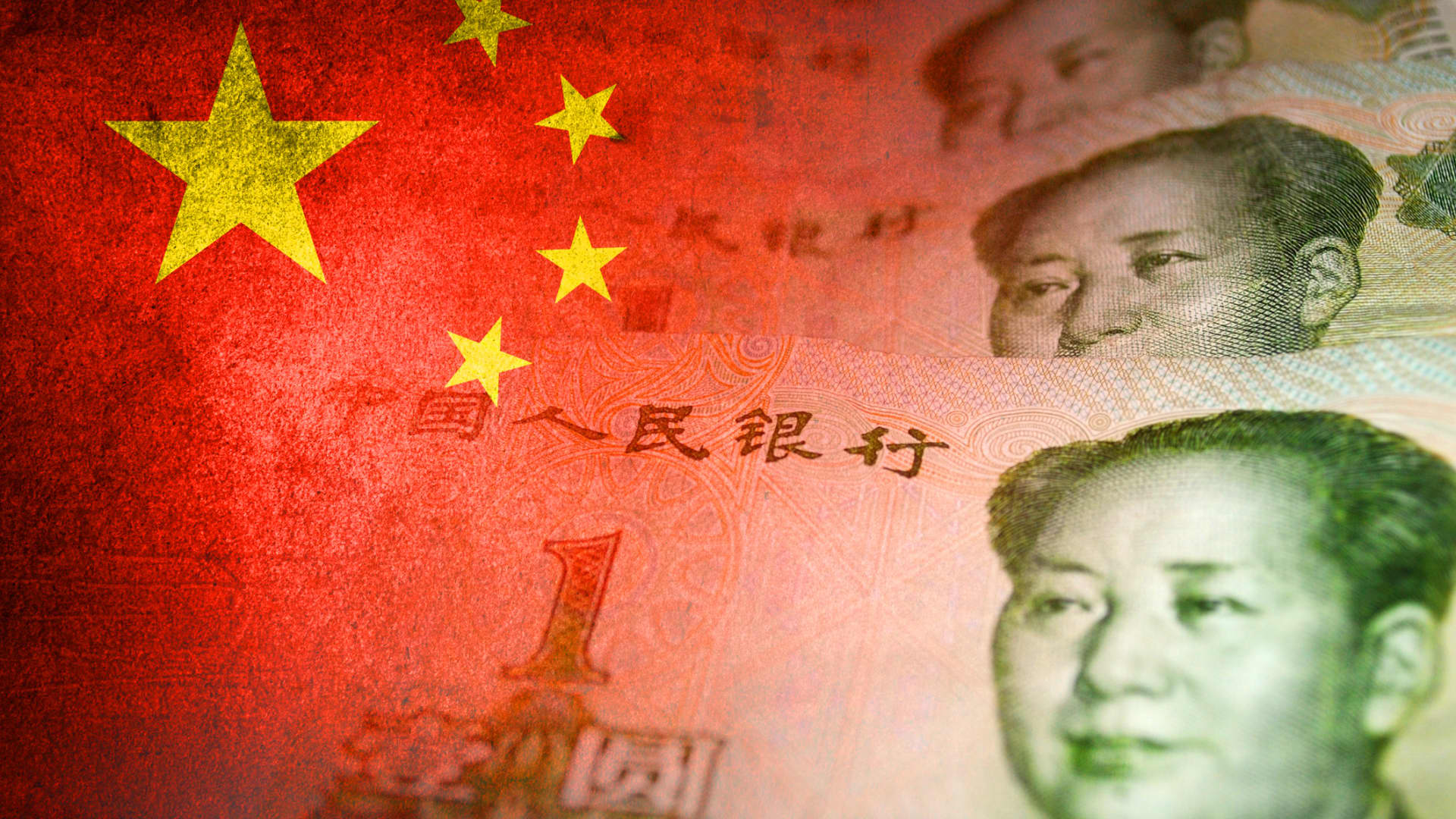CNY cash bills and Chinese flag (money, economics, finance, inflation and crisis)
Javier Gersi | moment | Getty Images
Rating agency Moody’s lowered its outlook on the Chinese government’s credit rating to negative from stable, anticipating that Beijing’s support and potential bailouts of distressed local governments and state-owned enterprises will reduce China’s financial, economic and institutional strength.
However, Moody’s maintained China’s long-term “A1” rating on the country’s sovereign bonds, while expecting China’s annual GDP growth to slow to 4% in 2024 and 2025 and average 3.8% from 2026 to 2030.
Structural factors, including vulnerable demographics, will cause the rate to fall to 3.5% by 2030, he added.
The move highlights concerns about rising debt levels and its impact on broader growth in the world’s second-largest economy as Beijing resorts to fiscal stimulus to support local governments and contain the escalating debt crisis among the country’s real estate developers.
“The changing outlook also reflects heightened risks associated with a structural and persistent decline
Moody’s said in its report: “Economic growth in the medium term and the continued downsizing of the real estate sector.” Statement issued on December 5.
“These trends highlight growing risks to policy effectiveness, including the challenge of designing and implementing policies that support economic rebalancing while preventing moral hazard and containing the impact on the sovereign debt balance sheet,” Moody’s added.
China’s credit default swaps (the cost of insuring against government deficits) rose 4 basis points from Monday’s closing level, according to Reuters data.
Beijing’s disappointment
The Chinese Ministry of Finance expressed its disappointment over the decision to lower Moody’s credit rating.
The ministry added that “Moody’s concerns about China’s economic growth prospects and financial sustainability are unnecessary.” He said in a statement Tuesday.
“Since the beginning of this year, in the face of the complex and severe international situation, and against the background of unstable global economic recovery and weak momentum, China’s macro economy has continued to recover and high-quality development has advanced steadily.” The ministry added.

The central government said on October 24 that it had formalized a process allowing local governments to borrow money for next year — starting from the previous fourth quarter, according to an announcement. Published by government media.
Beijing also announced a rare mid-year fiscal review, which included issuing 1 trillion yuan ($137 billion) worth of government debt — one of the biggest changes to the national budget in years. The amount was for the reconstruction of severely affected areas natural disasters – such as the historic floods that occurred this summer – and for disaster prevention.
Moody’s also cited a 1.6 trillion yuan increase in central government transfers to regional and local governments in 2022 compared to 2021, which partially but only temporarily offset 2 trillion yuan in lost land sales revenue, as a key development that factored into its thinking.












































